History > Edexcel > Edexcel a level history question paper option 2b 1 2 june 2023+ mark scheme (All)
Edexcel a level history question paper option 2b 1 2 june 2023+ mark scheme
Document Content and Description Below
Mark Scheme (Results) Summer 2023 Pearson Edexcel In GCE History (9HI0/2B) Advanced Paper 2: Depth study Option 2B.1: Luther and the German Reformation, c1515-1555 Option 2B.2: The Dutch Revol... t, c1563- 1609Edexcel and BTEC Qualifications Edexcel and BTEC qualifications are awarded by Pearson, the UK’s largest awarding body. We provide a wide range of qualifications including academic, vocational, occupational and specific programmes for employers. For further information visit our qualifications websites at www.edexcel.com or www.btec.co.uk. Alternatively, you can get in touch with us using the details on our contact us page at www.edexcel.com/contactus. Pearson: helping people progress, everywhere Pearson aspires to be the world’s leading learning company. Our aim is to help everyone progress in their lives through education. We believe in every kind of learning, for all kinds of people, wherever they are in the world. We’ve been involved in education for over 150 years, and by working across 70 countries, in 100 languages, we have built an international reputation for our commitment to high standards and raising achievement through innovation in education. Find out more about how we can help you and your students at: www.pearson.com/uk Summer 2023 Question Paper Log Number P72281A Publications Code 9HI0_2B_2306_MS All the material in this publication is copyright © Pearson Education Ltd 2023General Marking Guidance • All candidates must receive the same treatment. Examiners must mark the first candidate in exactly the same way as they mark the last. • Mark schemes should be applied positively. Candidates must be rewarded for what they have shown they can do rather than penalised for omissions. • Examiners should mark according to the mark scheme not according to their perception of where the grade boundaries may lie. • There is no ceiling on achievement. All marks on the mark scheme should be used appropriately. • All the marks on the mark scheme are designed to be awarded. Examiners should always award full marks if deserved, i.e. if the answer matches the mark scheme. Examiners should also be prepared to award zero marks if the candidate’s response is not worthy of credit according to the mark scheme. • Where some judgement is required, mark schemes will provide the principles by which marks will be awarded and exemplification may be limited. • When examiners are in doubt regarding the application of the mark scheme to a candidate’s response, the team leader must be consulted. • Crossed out work should be marked UNLESS the candidate has replaced it with an alternative response.Generic Level Descriptors: Section A Target: AO2: Analyse and evaluate appropriate source material, primary and/or contemporary to the period, within its historical context. Level Mark Descriptor 0 No rewardable material. 1 1–3 • Demonstrates surface level comprehension of the source material without analysis, selecting some material relevant to the question, but in the form of direct quotations or paraphrases. • Some relevant contextual knowledge is included, with limited linkage to the source material. • Evaluation of the source material is assertive with little or no supporting evidence. Concepts of reliability or utility may be addressed, but by making stereotypical judgements. 2 4–7 • Demonstrates some understanding and attempts analysis of the source material by selecting and summarising information and making undeveloped inferences relevant to the question. • Contextual knowledge is added to information from the source material to expand, confirm or challenge matters of detail. • Evaluation of the source material is related to the specified enquiry but with limited support for judgement. Concepts of reliability or utility are addressed mainly by noting aspects of source provenance and judgements may be based on questionable assumptions. 3 8–12 • Demonstrates understanding of the source material and shows some analysis by selecting key points relevant to the question, explaining their meaning and selecting material to support valid inferences. • Deploys knowledge of the historical context to explain or support inferences as well as to expand, confirm or challenge matters of detail. • Evaluation of the source material is related to the specified enquiry and explanation of utility takes into account relevant considerations such as nature or purpose of the source material or the position of the author. Judgements are based on valid criteria but with limited justification. 4 13–16 • Analyses the source material, interrogating the evidence to make reasoned inferences and to show a range of ways the material can be used, for example by distinguishing between information and claim or opinion, although treatment of the two sources may be uneven. • Deploys knowledge of the historical context to illuminate and/or discuss the limitations of what can be gained from the content of the source material, displaying some understanding of the need to interpret source material in the context of the values and concerns of the society from which it is drawn. • Evaluation of the source material uses valid criteria which are justified and applied, although some of the evaluation may be weakly substantiated. Evaluation takes into account the weight the evidence will bear as part of coming to a judgement. 5 17–20 • Interrogates the evidence of both sources with confidence and discrimination, making reasoned inferences and showing a range of ways the material can be used, for example by distinguishing between information and claim or opinion. • Deploys knowledge of the historical context to illuminate and/ or discuss the limitations of what can be gained from the content of the source material, displaying secure understanding of the need to interpret source material in the context of the values and concerns of the society from which it is drawn. • Evaluation of the source material uses valid criteria which are justified and fully applied. Evaluation takes into account the weight the evidence will bear as part of coming to a judgement and, where appropriate, distinguishes between the degree of certainty with which aspects of it can be used as the basis for claims.Section B Target: AO1: Demonstrate, organise and communicate knowledge and understanding to analyse and evaluate the key features related to the periods studied, making substantiated judgements and exploring concepts, as relevant, of cause, consequence, change, continuity, similarity, difference and significance. Level Mark Descriptor 0 No rewardable material. 1 1–3 • Simple or generalised statements are made about the topic. • Some accurate and relevant knowledge is included, but it lacks range and depth and does not directly address the question. • The overall judgement is missing or asserted. • There is little, if any, evidence of attempts to structure the answer, and the answer overall lacks coherence and precision. 2 4–7 • There is limited analysis of some key features of the period relevant to the question, but descriptive passages are included that are not clearly shown to relate to the focus of the question. • Mostly accurate and relevant knowledge is included, but lacks range or depth and has only implicit links to the demands and conceptual focus of the question. • An overall judgement is given but with limited substantiation and the criteria for judgement are left implicit. • The answer shows some attempts at organisation, but most of the answer is lacking in coherence, clarity and precision. 3 8–12 • There is some analysis of, and attempt to explain links between, the relevant key features of the period and the question, although descriptive passages may be included. • Mostly accurate and relevant knowledge is included to demonstrate some understanding of the demands and conceptual focus of the question, but material lacks range or depth. • Attempts are made to establish criteria for judgement and to relate the overall judgement to them, although with weak substantiation. • The answer shows some organisation. The general trend of the argument is clear, but parts of it lack logic, coherence and precision. 4 13–16 • Key issues relevant to the question are explored by an analysis of the relationships between key features of the period, although treatment of issues may be uneven. • Sufficient knowledge is deployed to demonstrate understanding of the demands and conceptual focus of the question and to meet most of its demands. • Valid criteria by which the question can be judged are established and applied in the process of coming to a judgement. Although some of the evaluations may be only partly substantiated, the overall judgement is supported. • The answer is generally well organised. The argument is logical and is communicated with clarity, although in a few places it may lack coherence and precision. 5 17–20 • Key issues relevant to the question are explored by a sustained analysis of the relationships between key features of the period. • Sufficient knowledge is deployed to demonstrate understanding of the demands and conceptual focus of the question, and to respond fully to its demands. • Valid criteria by which the question can be judged are established and applied and their relative significance evaluated in the process of reaching and substantiating the overall judgement. • The answer is well organised. The argument is logical and coherent throughout and is communicated with clarity a [Show More]
Last updated: 3 months ago
Preview 1 out of 43 pages

Reviews( 0 )
Document information
Connected school, study & course
About the document
Uploaded On
Jan 16, 2024
Number of pages
43
Written in
Additional information
This document has been written for:
Uploaded
Jan 16, 2024
Downloads
0
Views
26

.png)
.png)
.png)
.png)
.png)
.png)
.png)
.png)
.png)
.png)
.png)
.png)
.png)
.png)
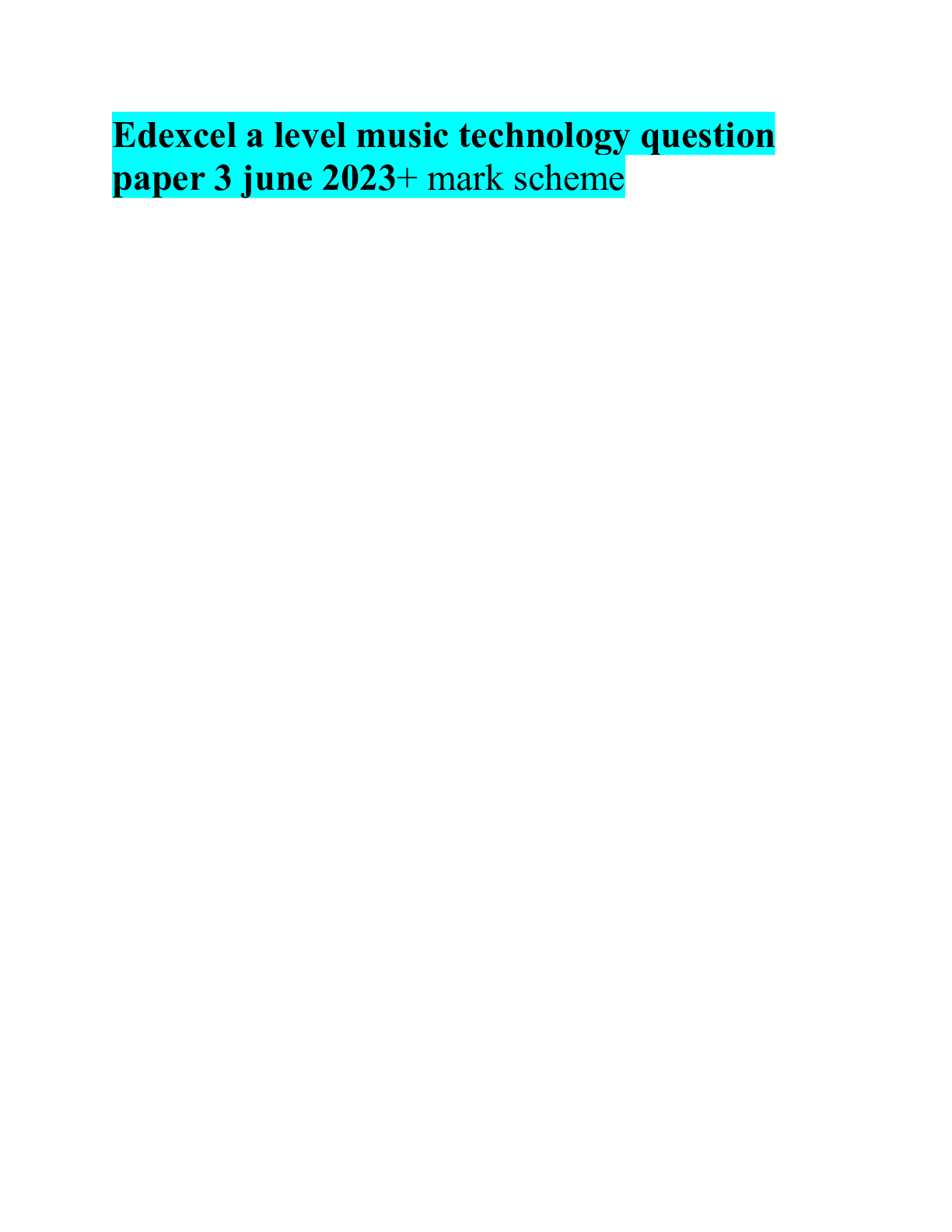
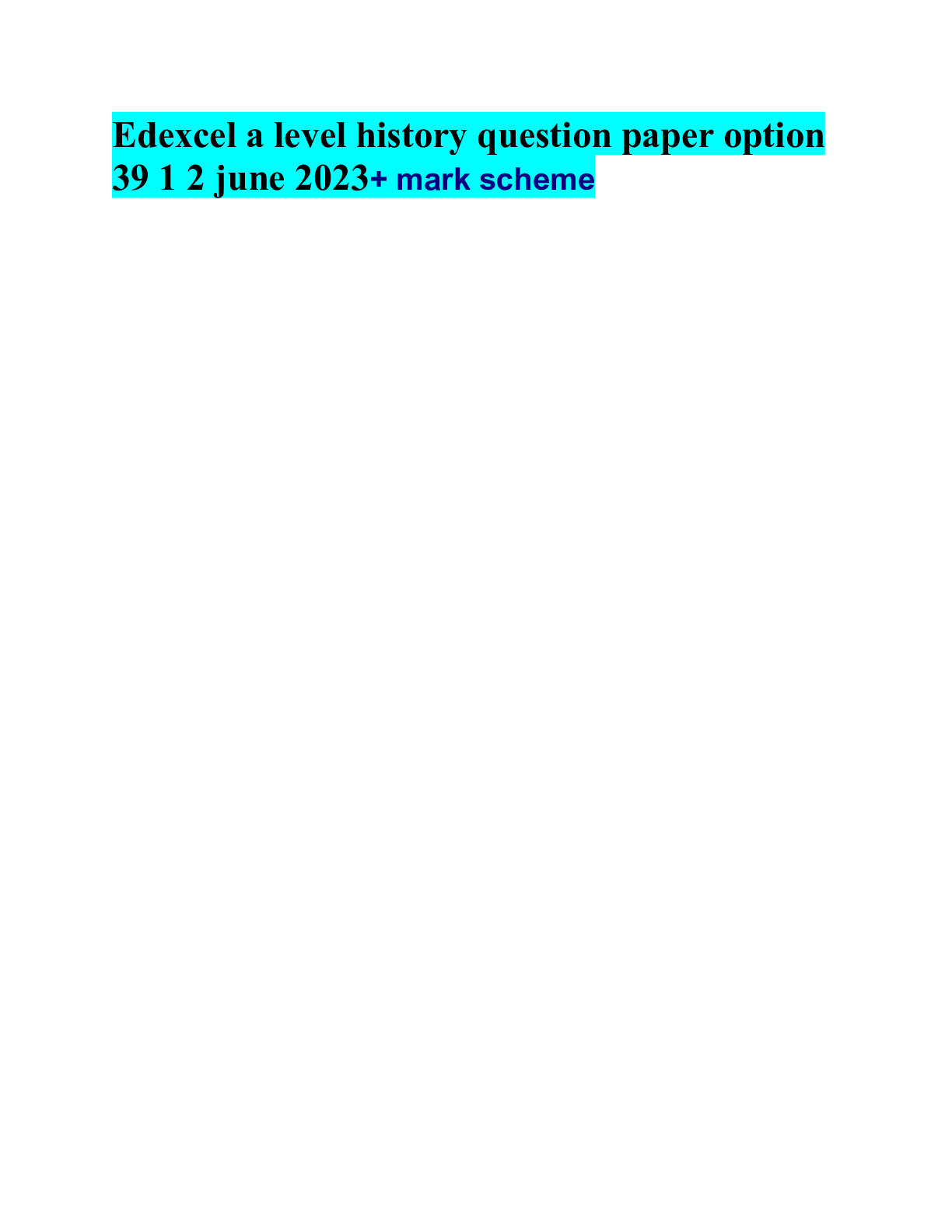

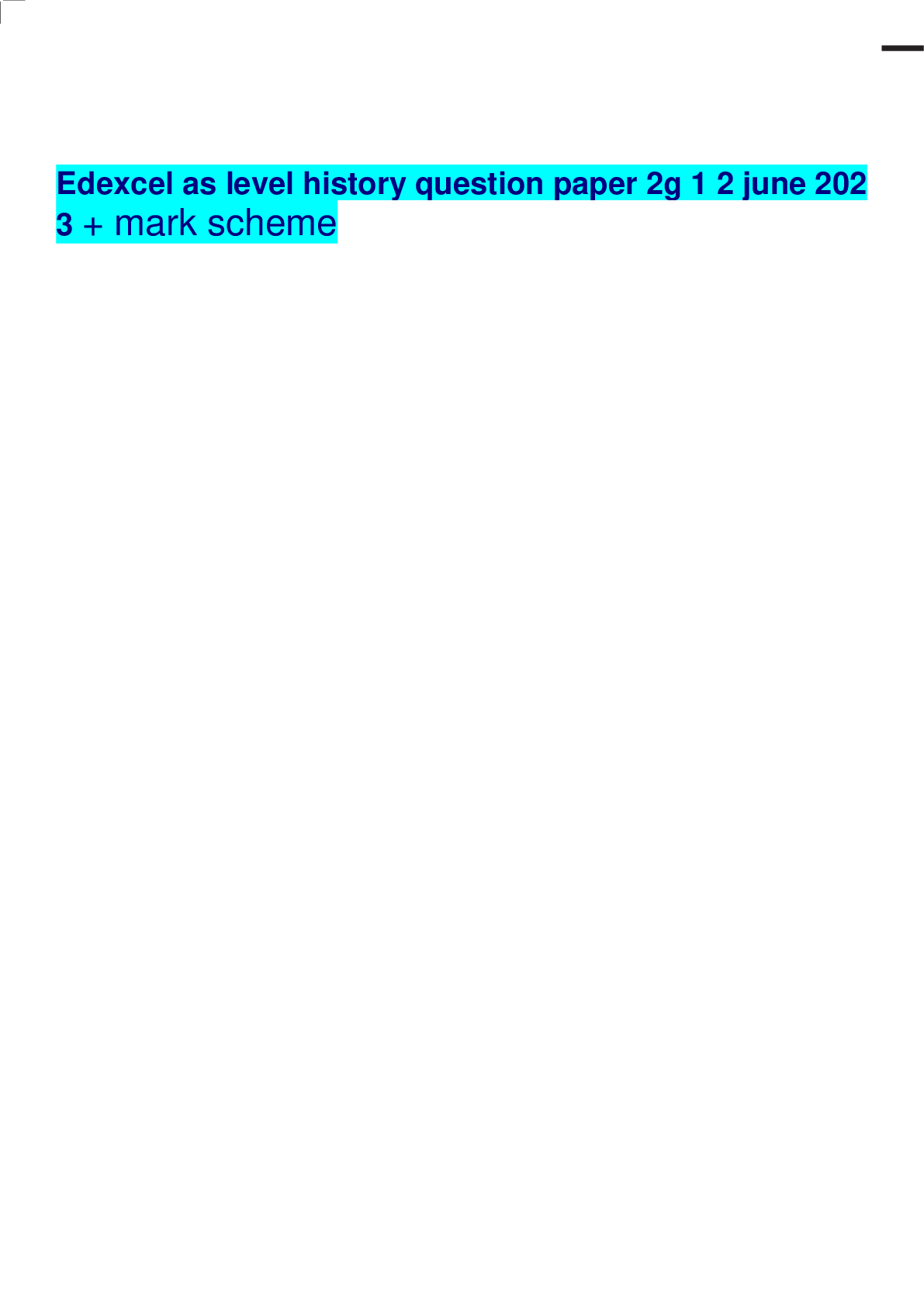
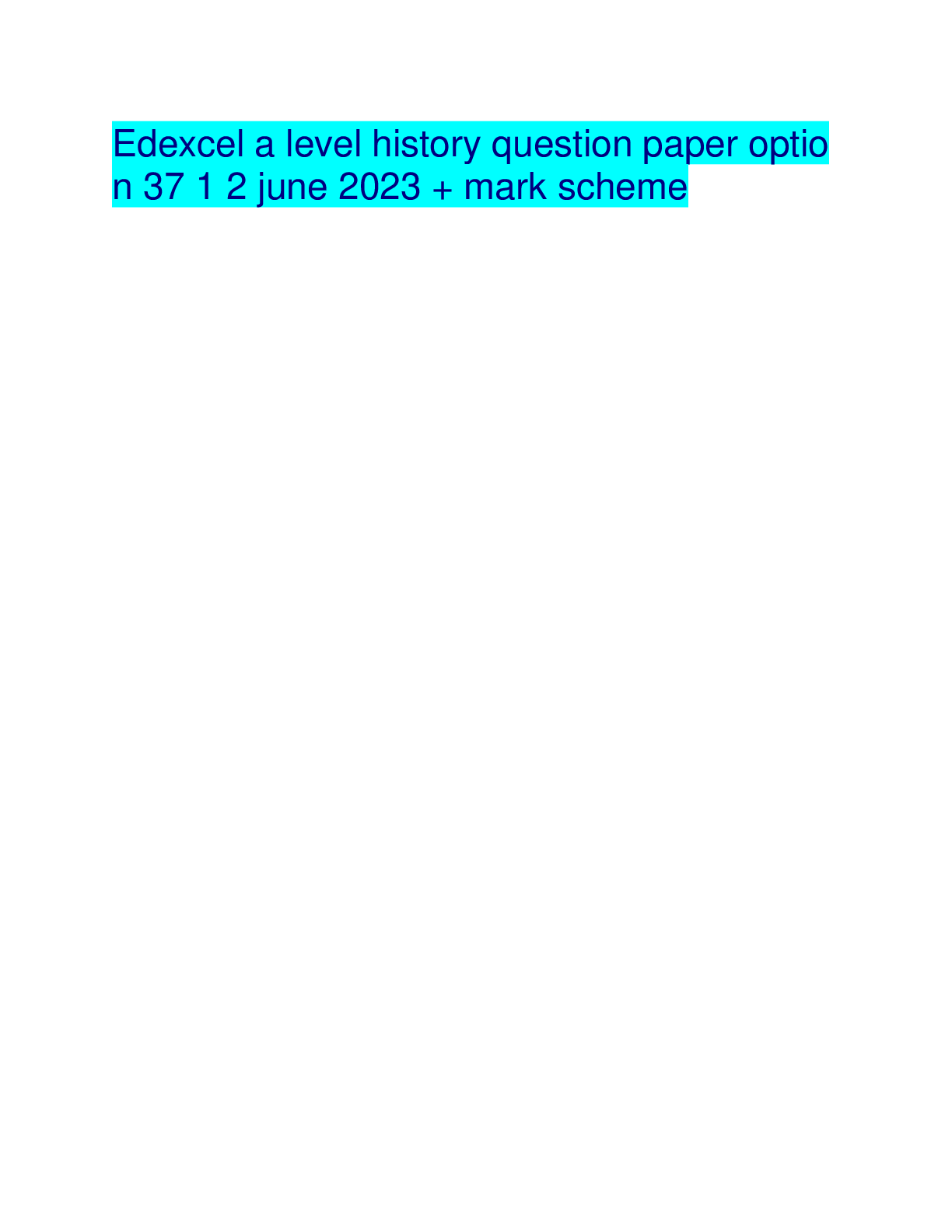
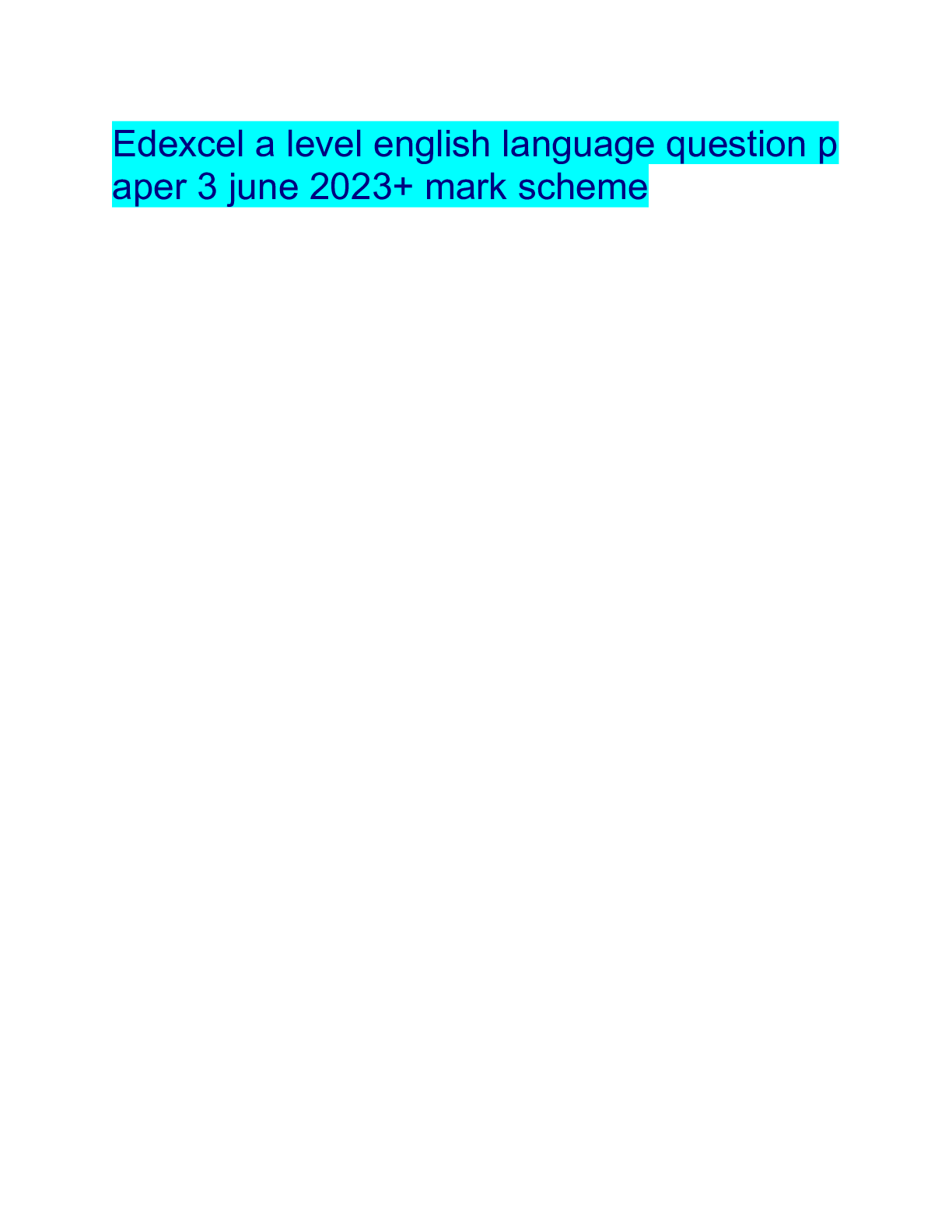
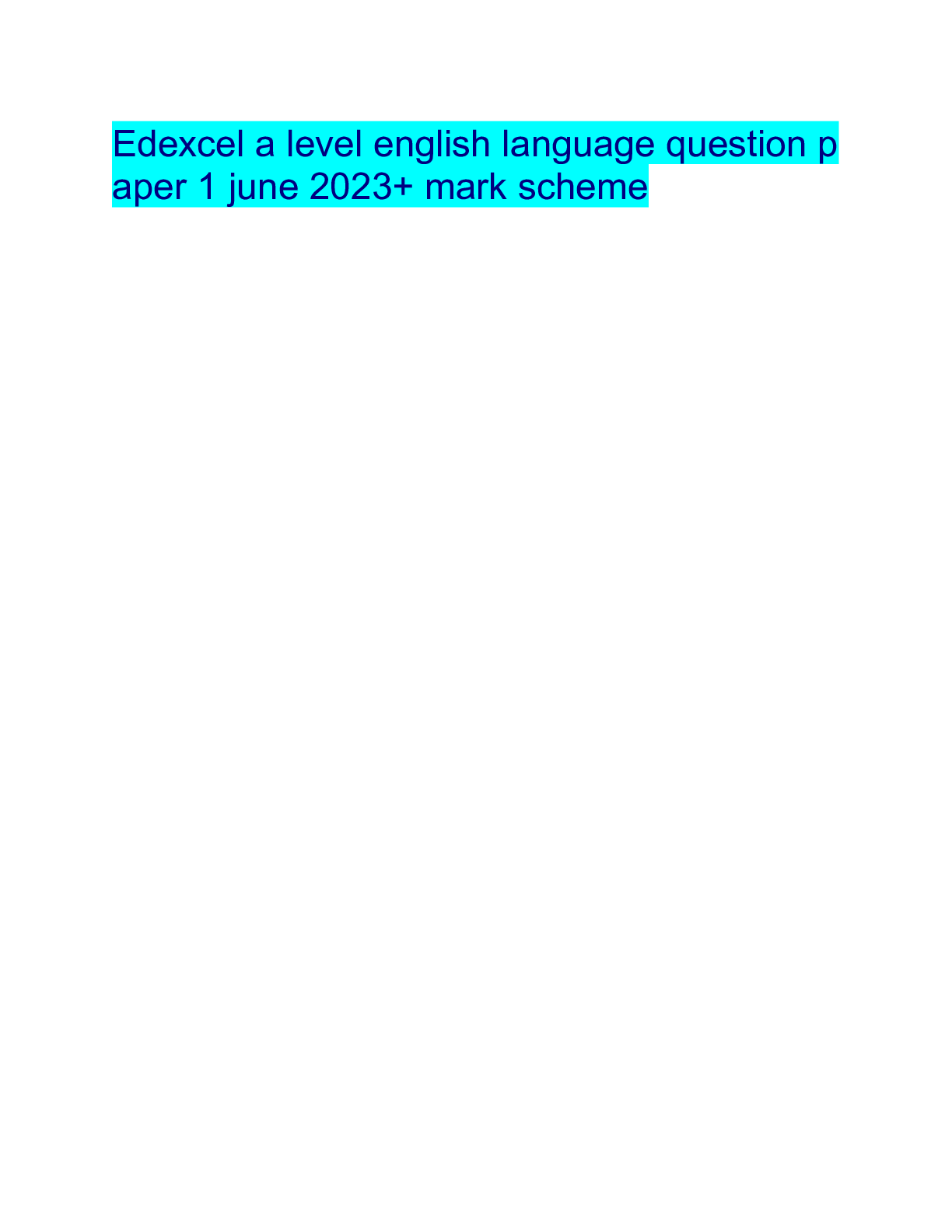
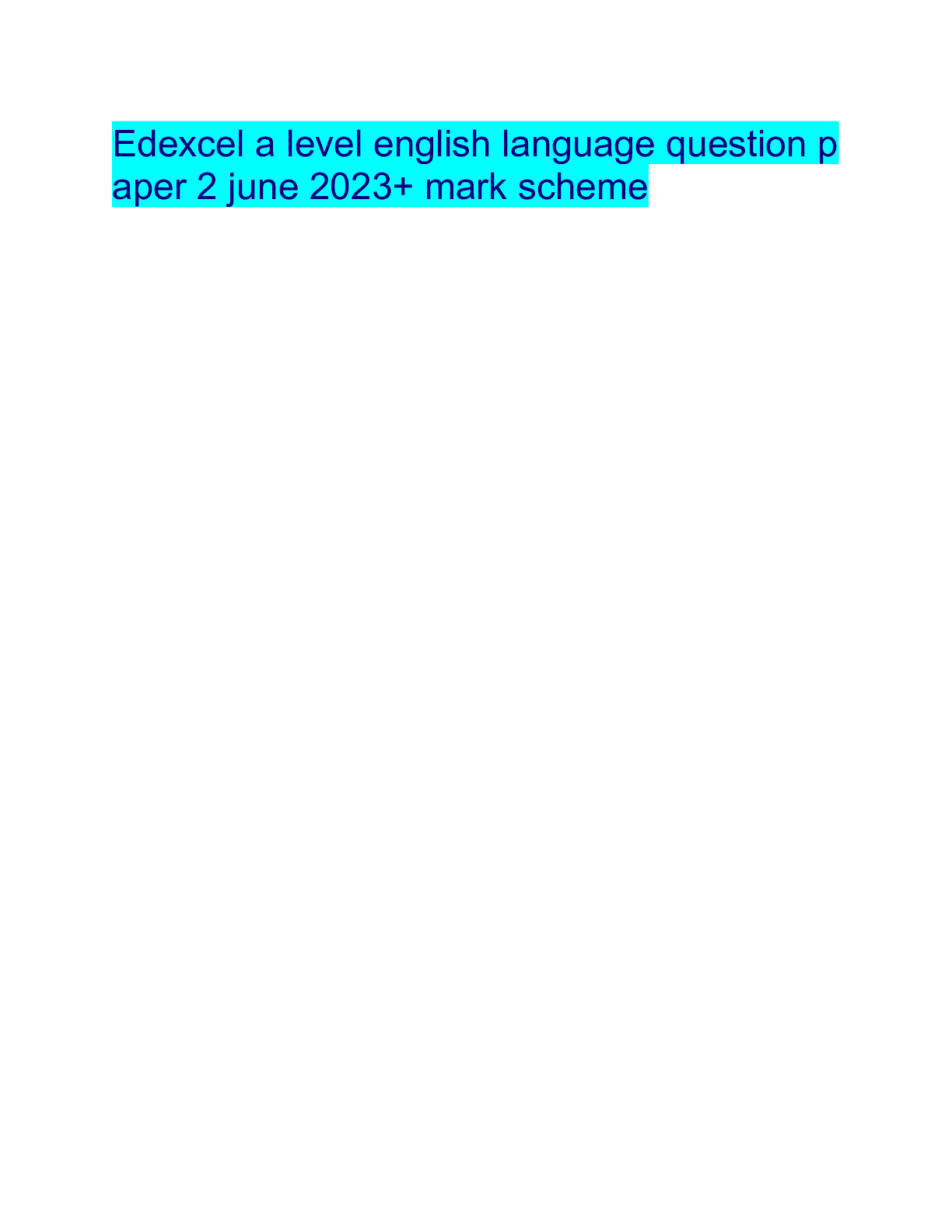
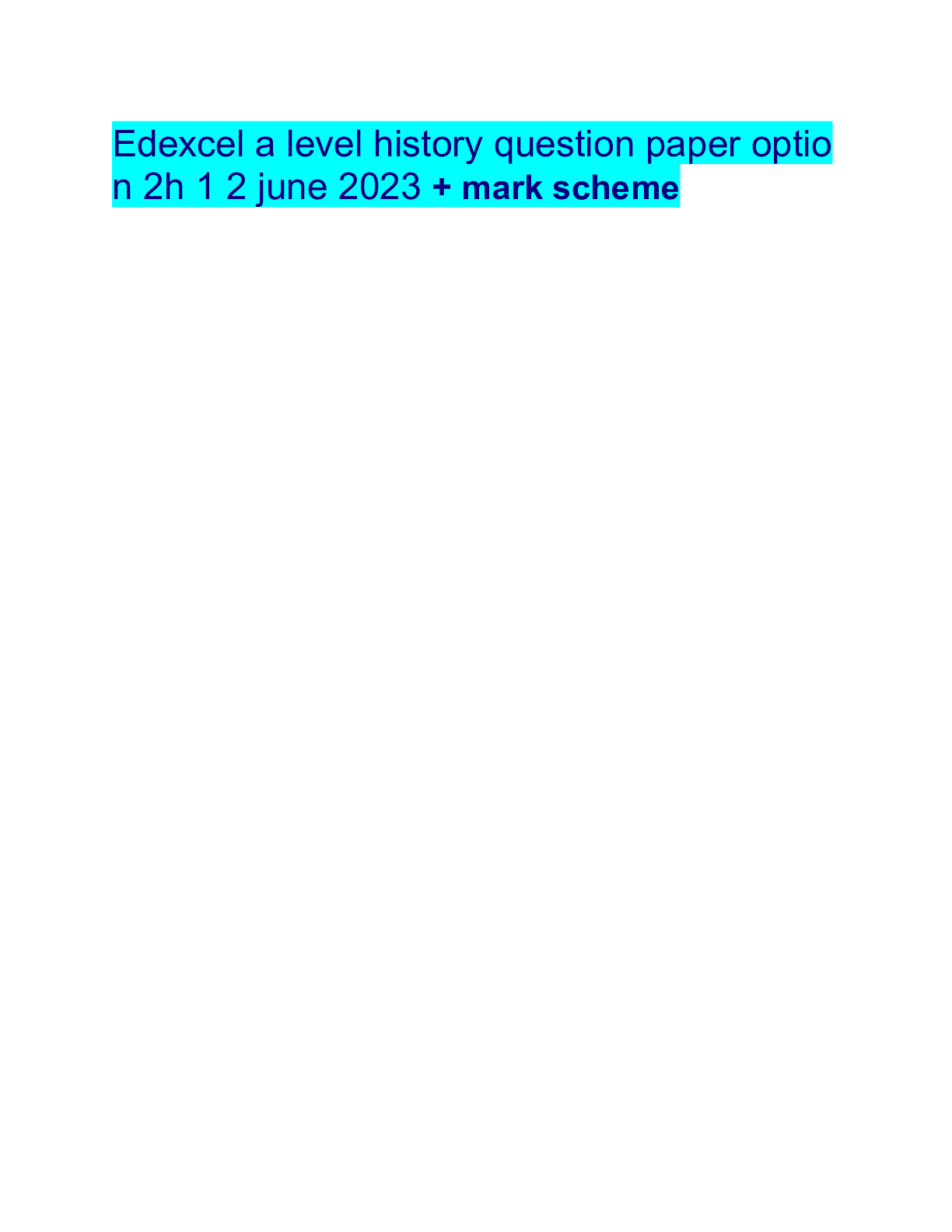

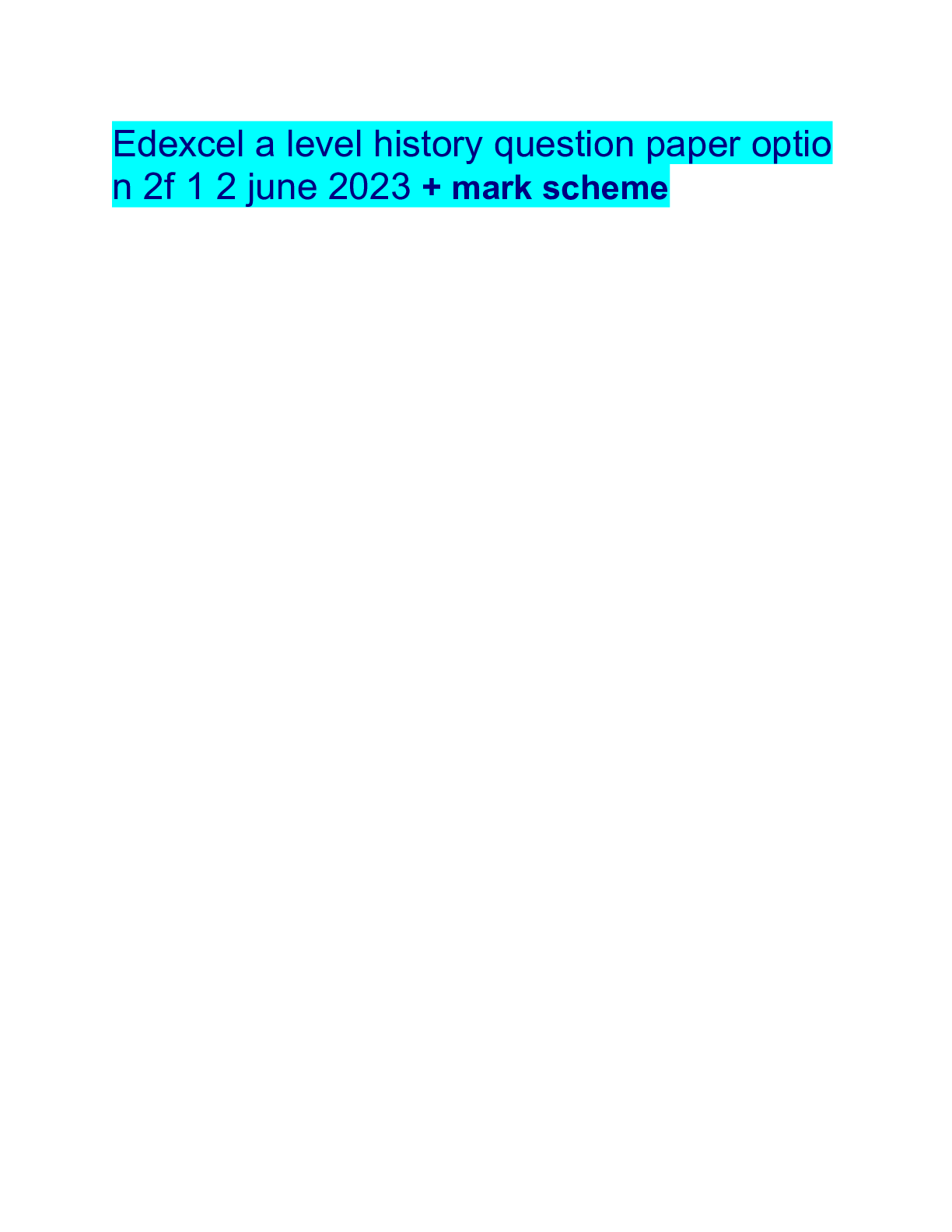



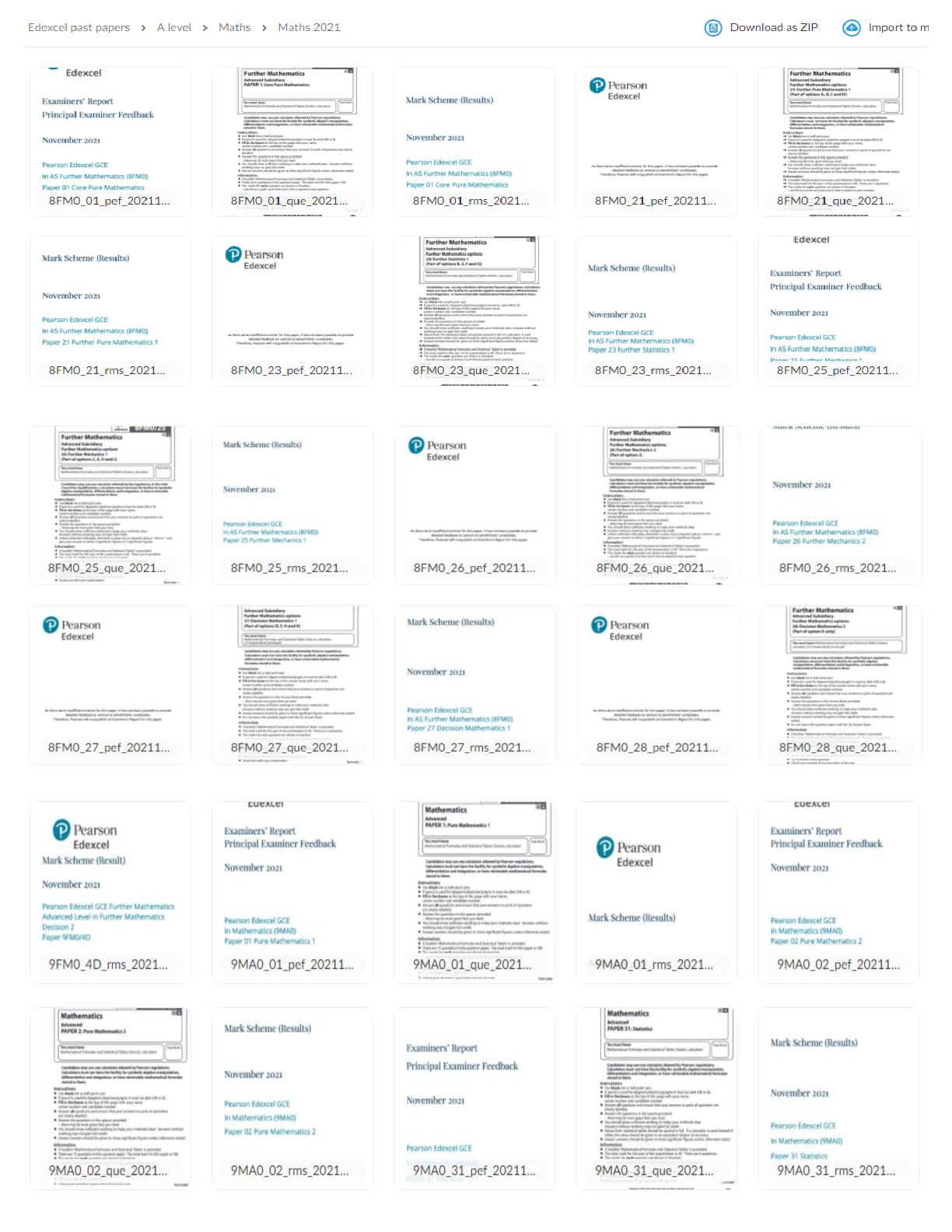
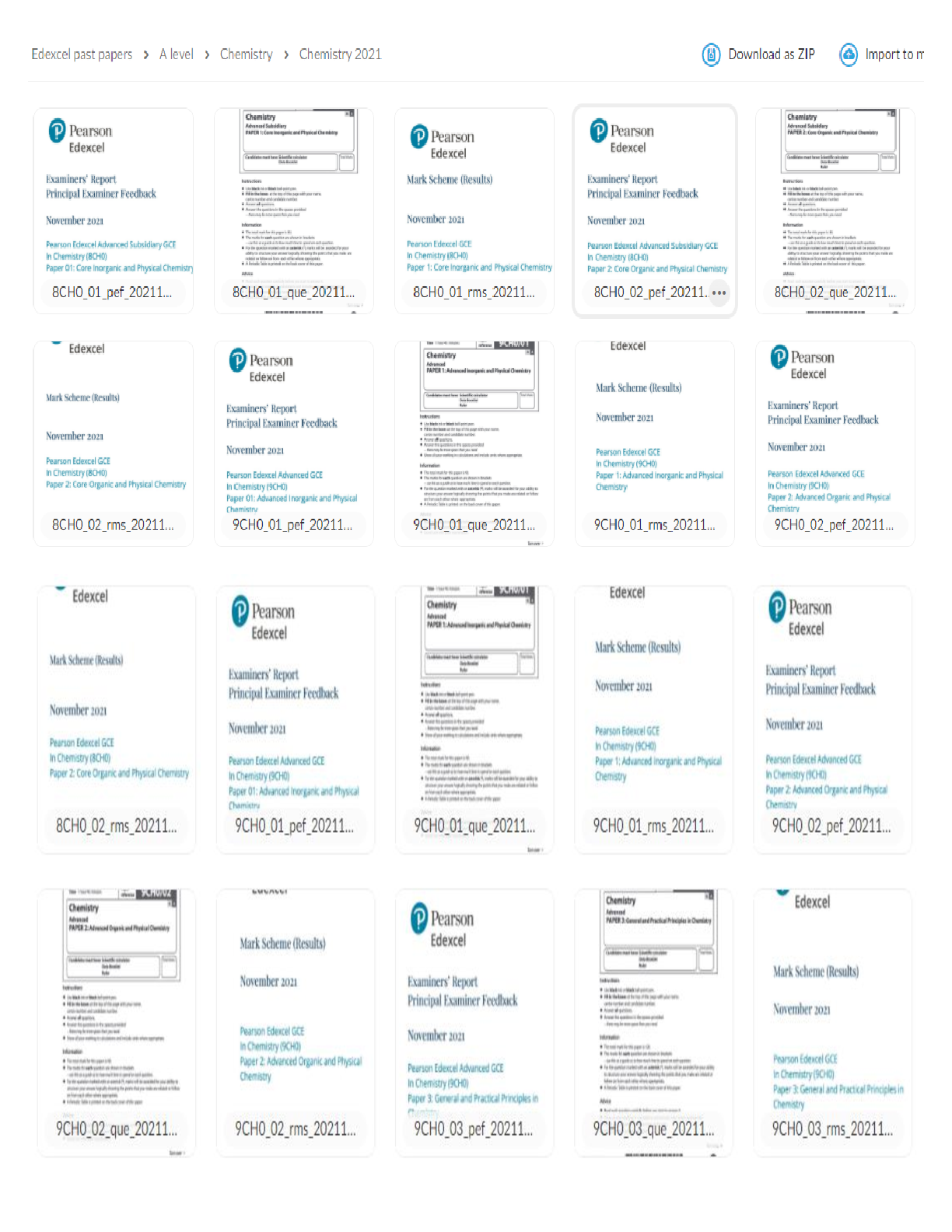
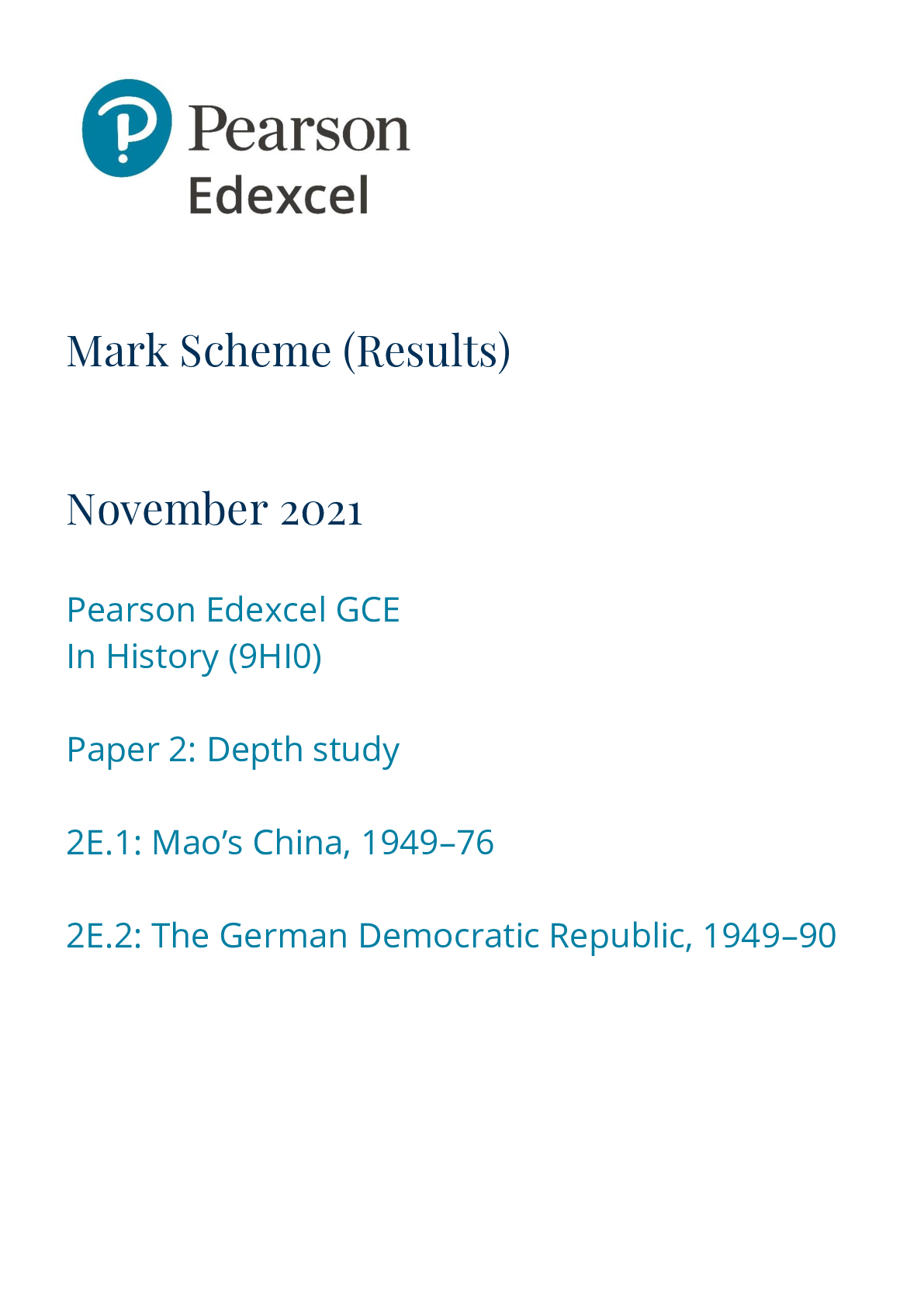

.png)
.png)

